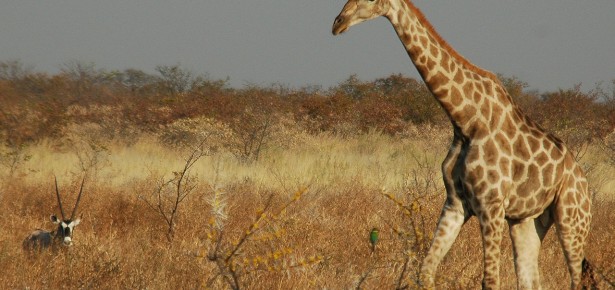In 1976, I coauthored the first scientific book on the giraffe which sold well. I had been the first to go to Africa to study this wonderful animal (or any wild African animal actually), and my coauthor had been the second. Our book was still in print in 2011, when Cambridge University Press, which was in the process of publishing my book, Animal Friendships, asked if I would be interested in writing a new giraffe book.
I was tempted, because I was sure more research would have been carried out on giraffe since 1982. I checked out various journals to see exactly what new information was available. The more I delved into the scientific papers, the more interested I became. The new discoveries were amazing, described in over 200 articles published in the past 30 years. I was hooked!
Much of the new information in this 2014 book is exciting:
- Giraffe rarely make vocal noises, but they do communicate by infrasound which is too low for us to hear;
- Rather than being rather antisocial, as was originally thought, giraffe females may hang out together and be best buddies for six years or more;
- In zoos females may seem to be poor mothers because while stressed they have stepped on their infants, but actually they can become pregnant while still nursing (unlike most mammals) and in the wild grieve the loss of a youngster as do apes and elephants;
- Giraffe have various adaptations to keep themselves cool in hot weather, but in cold areas such as the southern Africa and northern zoos, they may die from the cold;
- Rapid eye movement (REM) studies while a giraffe is asleep are a measure of the stress the giraffe in under;
- DNA studies show that the nine races of giraffe, all living in their own areas of Africa, have been apart for up to a million years. (This is weird! Males could have walked to and mated with females of another race, but they didn’t do this.) Some races have been isolated for over a million years, and may in fact be true species (because they no longer interbreed in the wild) rather than subspecies.

Latest Comments
Have your say!